

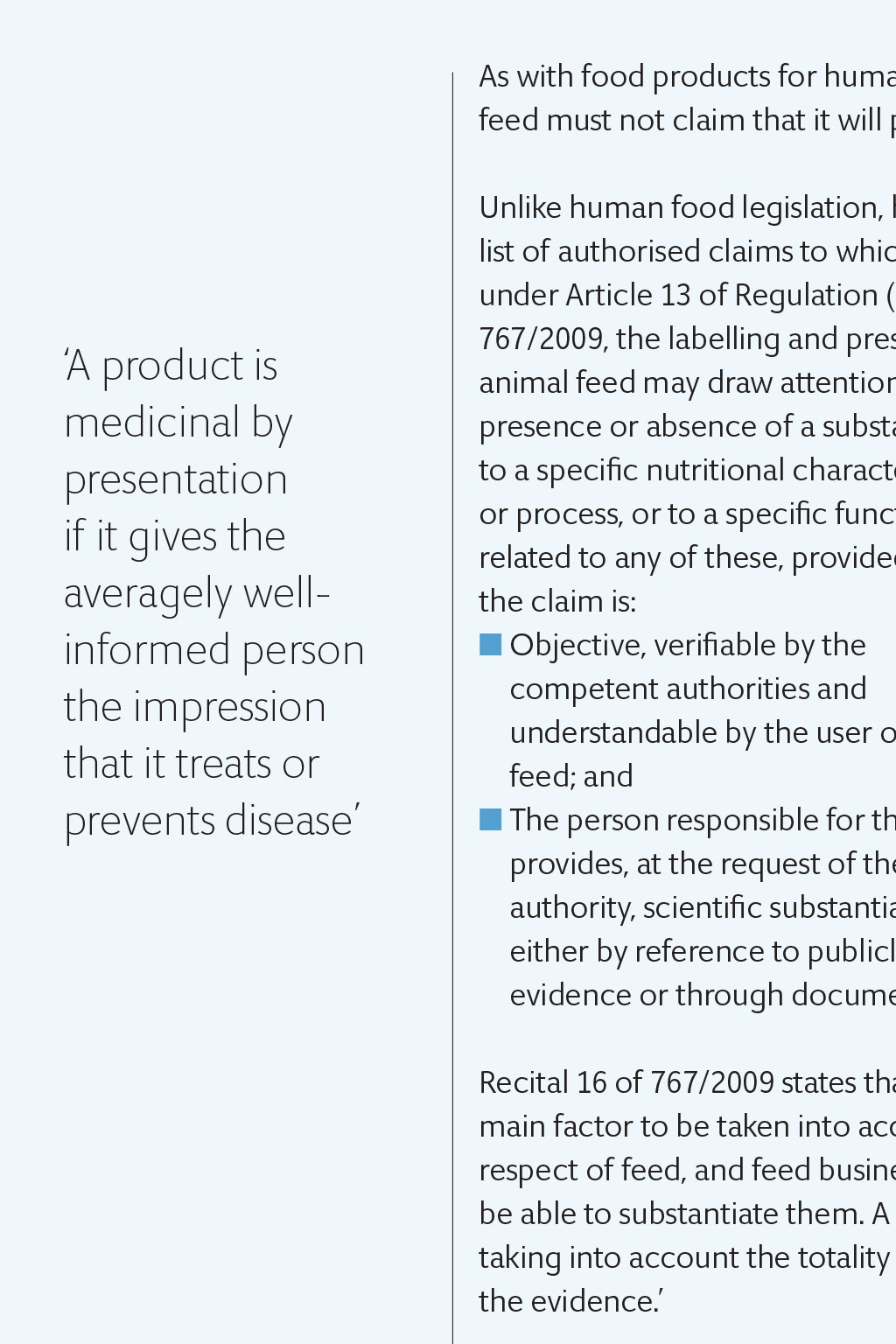
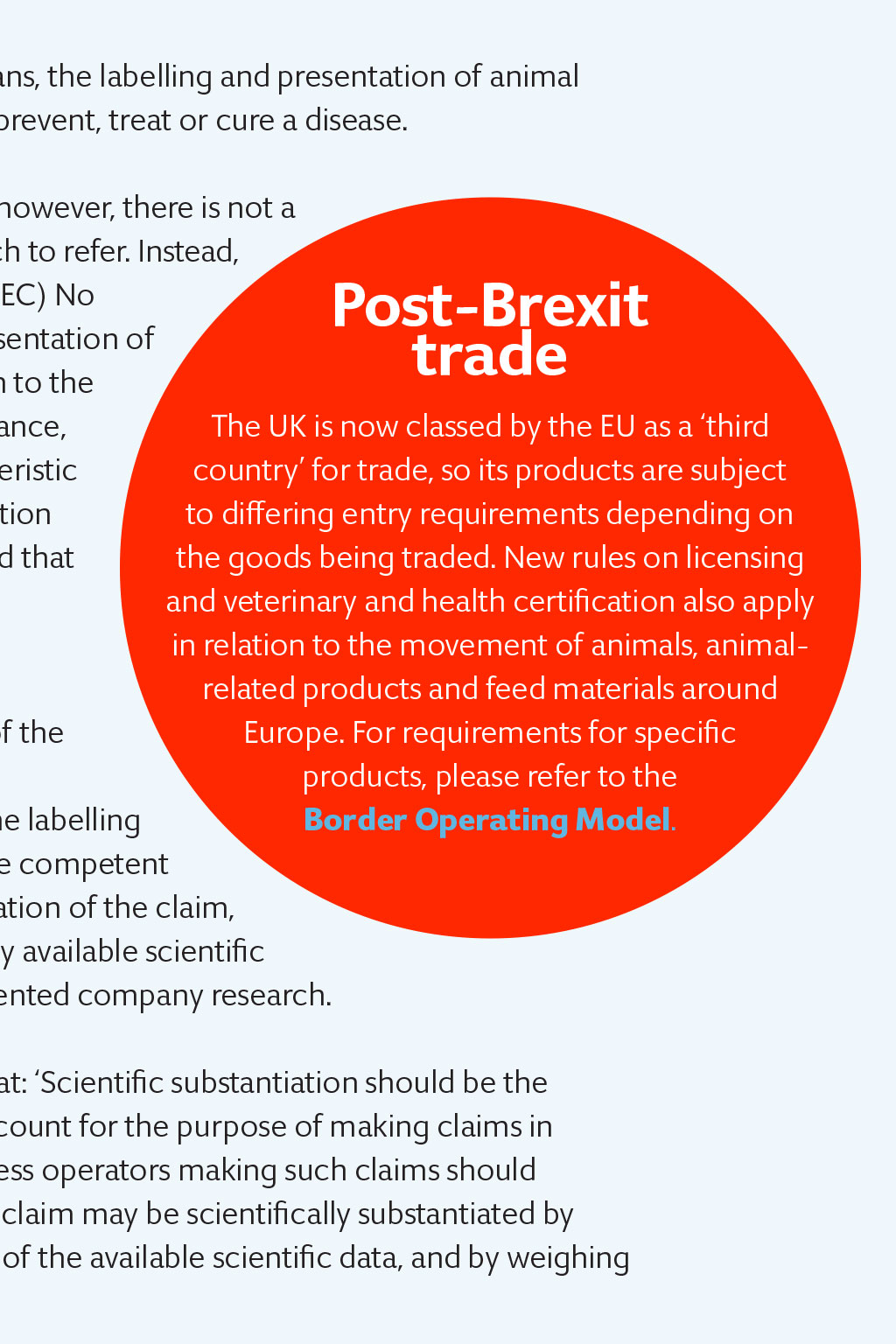
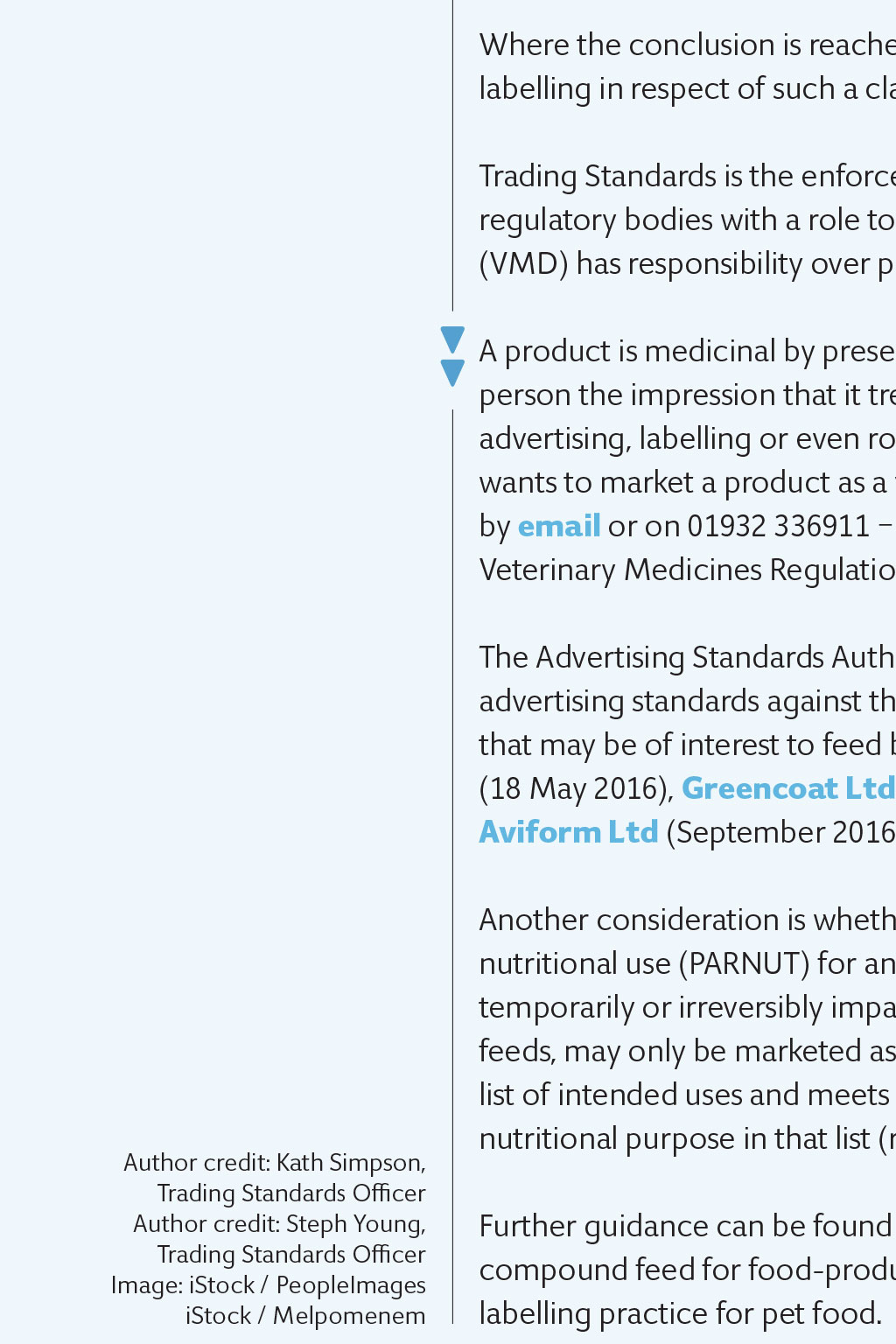
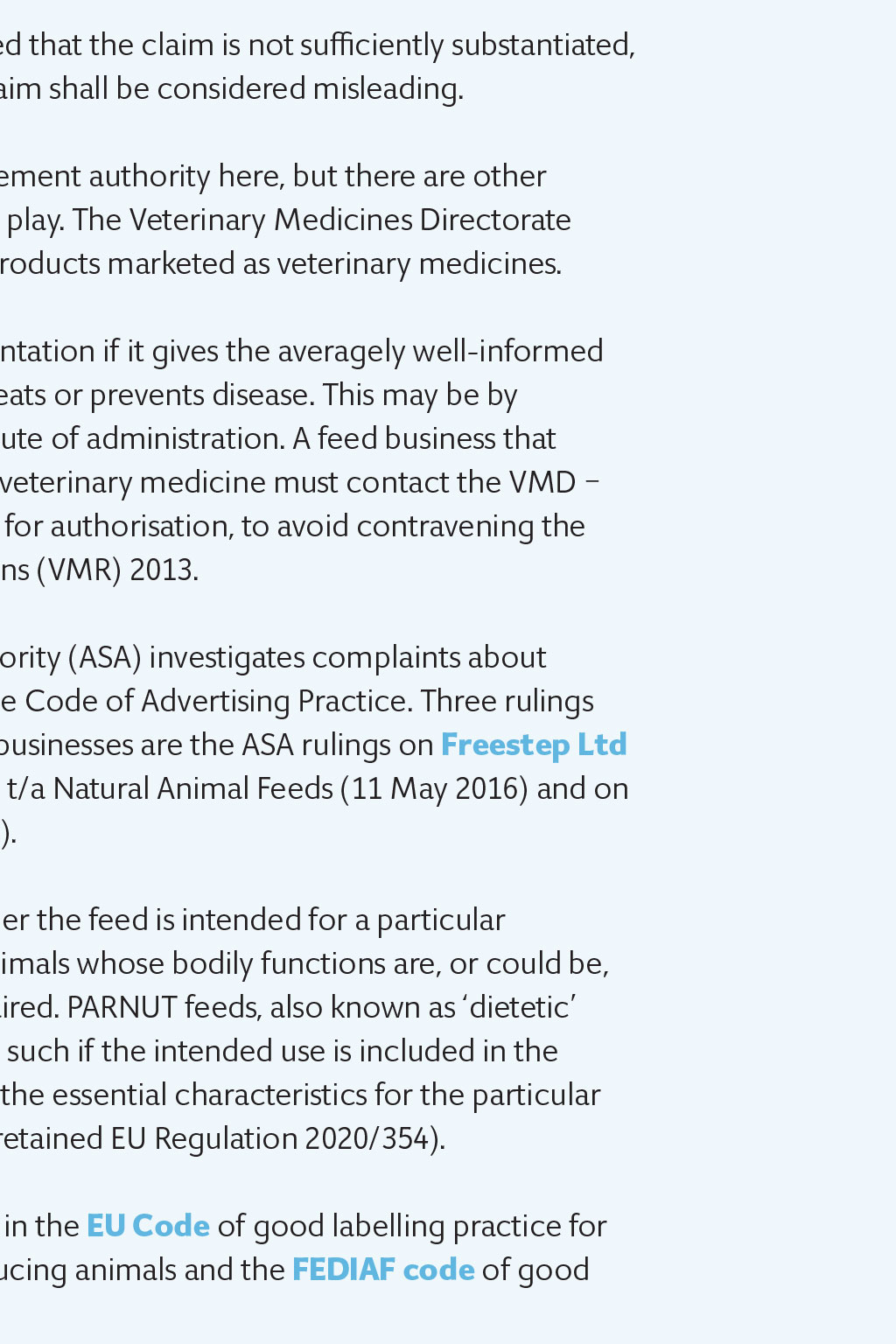
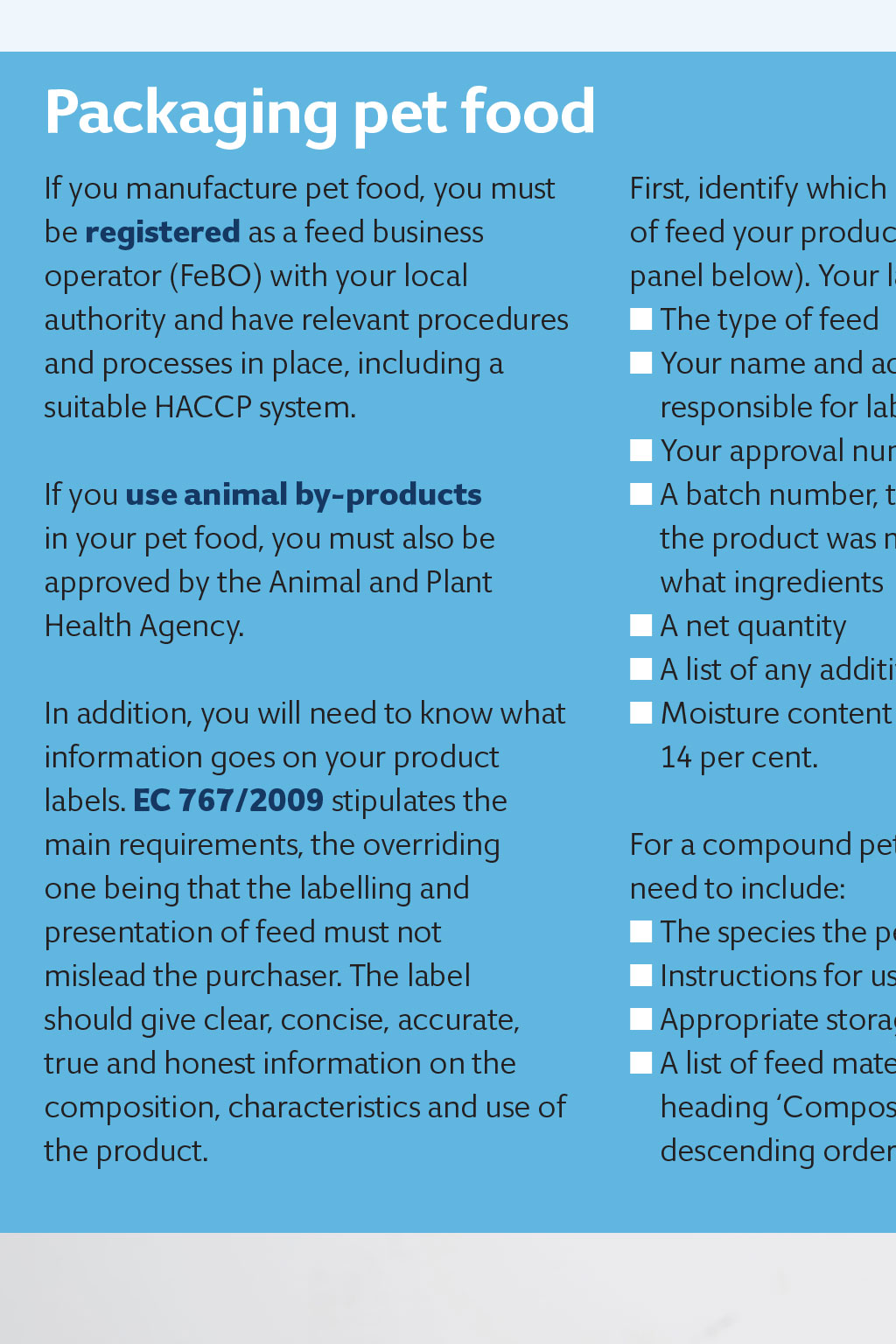
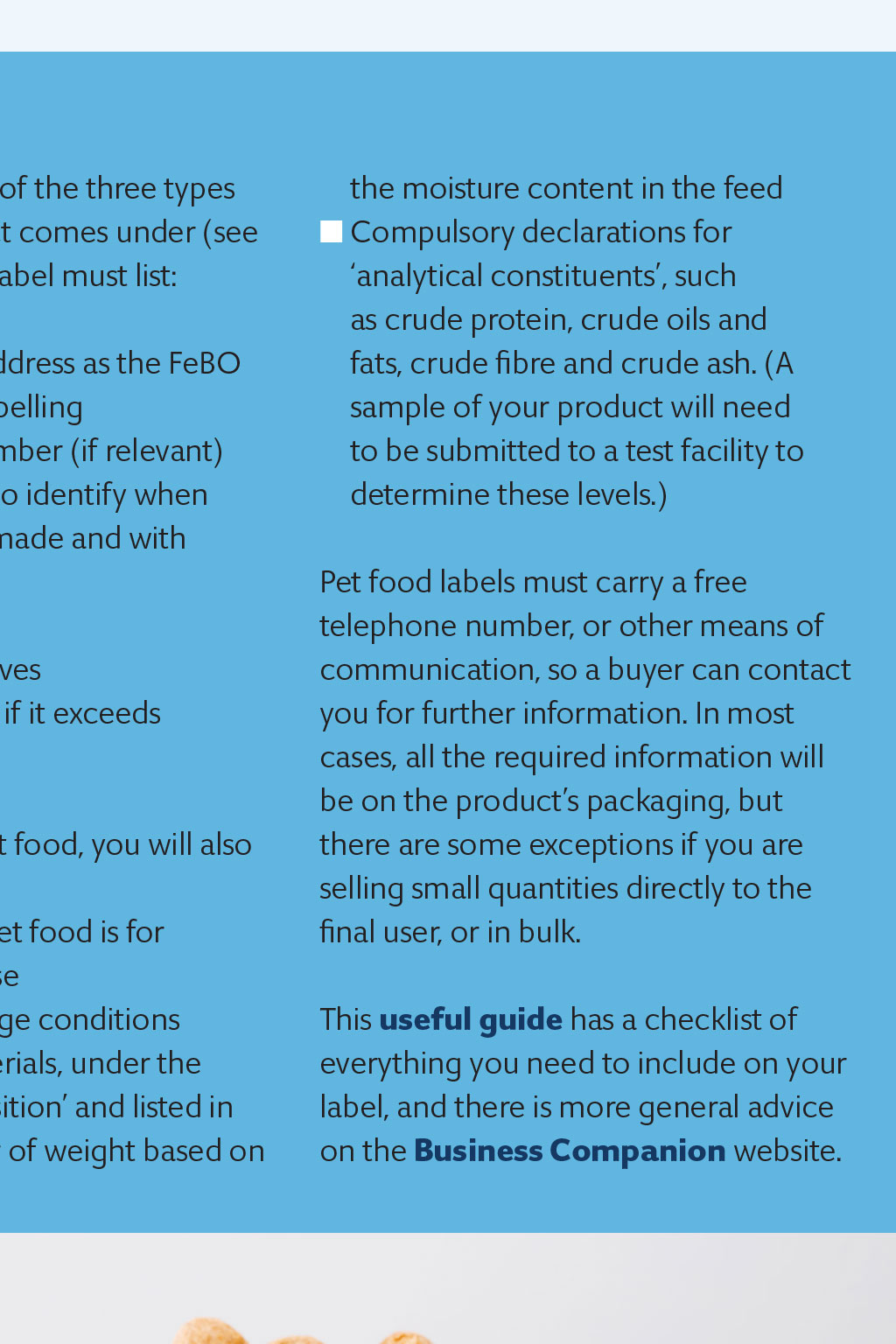

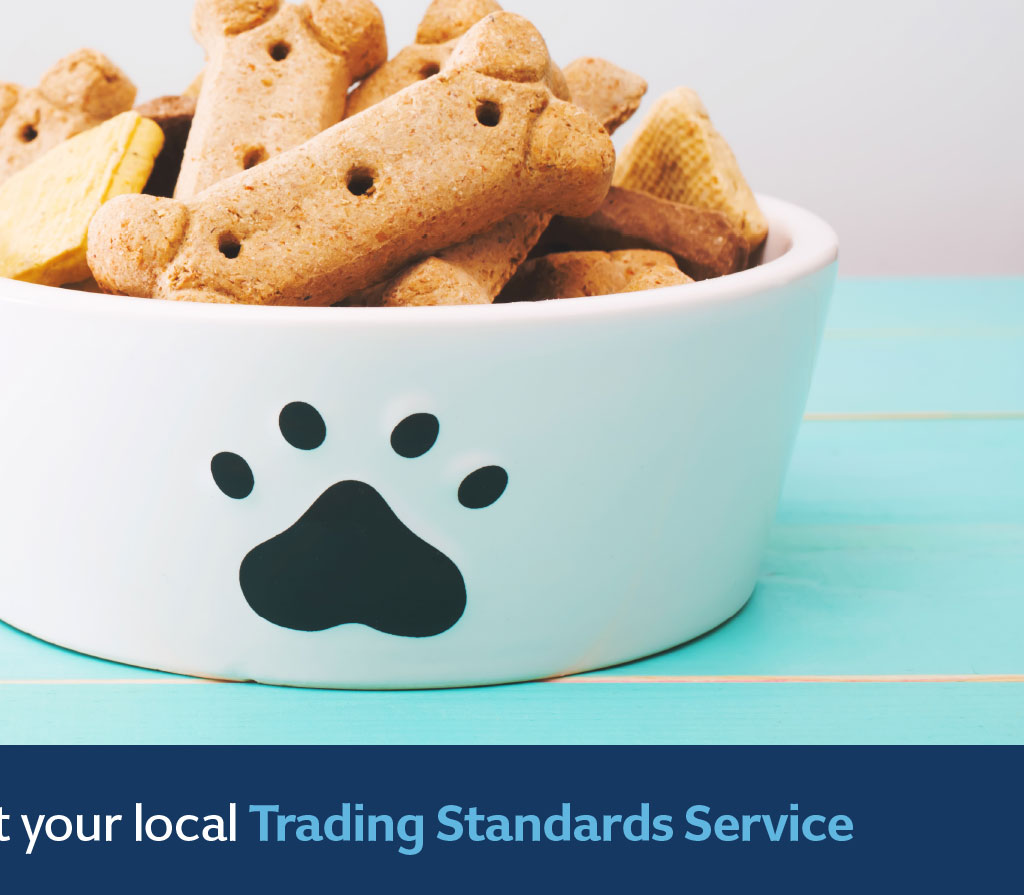











WINTER 2021 ANIMAL FEED Chew over your choices Feed business operators must be able to substantiate, scientifically, any claims that they make in respect of their products As with food products for humans, the labelling and presentation of animal feed must not claim that it will prevent, treat or cure a disease. A product is medicinal by presentation if it gives the averagely wellinformed person the impression that it treats or prevents disease Unlike human food legislation, however, there is not a list of authorised claims to which to refer. Instead, under Article 13 of Regulation (EC) No 767/2009, the labelling and presentation of animal feed may draw attention to the presence or absence of a substance, The UK is now classed by the EU as a third to a specific nutritional characteristic country for trade, so its products are subject or process, or to a specific function to differing entry requirements depending on related to any of these, provided that the goods being traded. New rules on licensing the claim is: and veterinary and health certification also apply Objective, verifiable by the in relation to the movement of animals, animalcompetent authorities and related products and feed materials around understandable by the user of the Europe. For requirements for specific feed; and products, please refer to the The person responsible for the labelling Border Operating Model. provides, at the request of the competent authority, scientific substantiation of the claim, either by reference to publicly available scientific evidence or through documented company research. Post-Brexit trade Recital 16 of 767/2009 states that: Scientific substantiation should be the main factor to be taken into account for the purpose of making claims in respect of feed, and feed business operators making such claims should be able to substantiate them. A claim may be scientifically substantiated by taking into account the totality of the available scientific data, and by weighing the evidence. Where the conclusion is reached that the claim is not sufficiently substantiated, labelling in respect of such a claim shall be considered misleading. Trading Standards is the enforcement authority here, but there are other regulatory bodies with a role to play. The Veterinary Medicines Directorate (VMD) has responsibility over products marketed as veterinary medicines. A product is medicinal by presentation if it gives the averagely well-informed person the impression that it treats or prevents disease. This may be by advertising, labelling or even route of administration. A feed business that wants to market a product as a veterinary medicine must contact the VMD by email or on 01932 336911 for authorisation, to avoid contravening the Veterinary Medicines Regulations (VMR) 2013. The Advertising Standards Authority (ASA) investigates complaints about advertising standards against the Code of Advertising Practice. Three rulings that may be of interest to feed businesses are the ASA rulings on Freestep Ltd (18 May 2016), Greencoat Ltd t/a Natural Animal Feeds (11 May 2016) and on Aviform Ltd (September 2016). Author credit: Kath Simpson, Trading Standards Officer Author credit: Steph Young, Trading Standards Officer Image: iStock / PeopleImages iStock / Melpomenem Another consideration is whether the feed is intended for a particular nutritional use (PARNUT) for animals whose bodily functions are, or could be, temporarily or irreversibly impaired. PARNUT feeds, also known as dietetic feeds, may only be marketed as such if the intended use is included in the list of intended uses and meets the essential characteristics for the particular nutritional purpose in that list (retained EU Regulation 2020/354). Further guidance can be found in the EU Code of good labelling practice for compound feed for food-producing animals and the FEDIAF code of good labelling practice for pet food. Packaging pet food If you manufacture pet food, you must be registered as a feed business operator (FeBO) with your local authority and have relevant procedures and processes in place, including a suitable HACCP system. If you use animal by-products in your pet food, you must also be approved by the Animal and Plant Health Agency. In addition, you will need to know what information goes on your product labels. EC 767/2009 stipulates the main requirements, the overriding one being that the labelling and presentation of feed must not mislead the purchaser. The label should give clear, concise, accurate, true and honest information on the composition, characteristics and use of the product. First, identify which of the three types of feed your product comes under (see panel below). Your label must list: The type of feed Your name and address as the FeBO responsible for labelling Your approval number (if relevant) A batch number, to identify when the product was made and with what ingredients A net quantity A list of any additives Moisture content if it exceeds 14 per cent. For a compound pet food, you will also need to include: The species the pet food is for Instructions for use Appropriate storage conditions A list of feed materials, under the heading Composition and listed in descending order of weight based on the moisture content in the feed Compulsory declarations for analytical constituents, such as crude protein, crude oils and fats, crude fibre and crude ash. (A sample of your product will need to be submitted to a test facility to determine these levels.) Pet food labels must carry a free telephone number, or other means of communication, so a buyer can contact you for further information. In most cases, all the required information will be on the products packaging, but there are some exceptions if you are selling small quantities directly to the final user, or in bulk. This useful guide has a checklist of everything you need to include on your label, and there is more general advice on the Business Companion website. Types of feed Feed material: a product of vegetable or animal origin that is in its natural or preserved state eg, beef mince Complete feed: a compound feed (a mixture of two or more materials eg, beef mince and cereals) that is sufficient for the animals daily ration Complementary feed: a compound feed that is not sufficient, on its own, for a daily ration eg, a treat. Source: Article 15: EC 767/2009 For further information, please contact your local Trading Standards Service